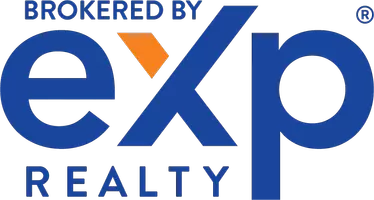Demystifying Mortgage Lending: A Glossary of Important Terms for First-Time Homebuyers
Introduction:
Buying a home is an exciting milestone, but the mortgage lending process can sometimes feel overwhelming, especially for first-time homebuyers. To help you navigate this journey with confidence, we've compiled a comprehensive glossary of important terms related to mortgage lending. By familiarizing yourself with these key concepts, you'll gain a better understanding of the language used in the mortgage industry, empowering you to make informed decisions.
1. Amortization:
Amortization refers to the gradual repayment of a loan over time through regular installments. These installments typically include both principal (the original loan amount) and interest payments. Understanding how amortization works is crucial for budgeting and long-term financial planning.
2. Annual Percentage Rate (APR):
The Annual Percentage Rate, or APR, represents the overall cost of borrowing and is expressed as a percentage. It encompasses not only the loan's interest rate but also includes other fees and charges associated with the loan. Comparing APRs allows you to evaluate and compare different mortgage offers effectively.
3. Appraisal:
An appraisal is an evaluation performed by a professional appraiser to determine the value of a property. Lenders use appraisals to ensure that the property's value is sufficient to secure the loan amount requested by the borrower.
4. Closing Costs:
Closing costs are fees and expenses incurred during the mortgage closing process. These costs include items such as loan origination fees, title insurance, appraisal fees, attorney fees, and other charges. It's important to budget for closing costs to avoid any unexpected financial burdens.
5. Collateral:
Collateral is an asset, usually the property being financed, that serves as security for the loan. If the borrower fails to repay the loan, the lender has the right to seize the collateral. Understanding the role of collateral helps borrowers comprehend the importance of timely mortgage payments.
6. Down Payment:
The down payment is the initial payment made by the buyer towards the purchase of a home. It is typically a percentage of the total purchase price. A higher down payment can result in a lower loan amount, reduced monthly payments, and potentially lower interest rates.
7. Equity:
Equity represents the owner's ownership interest in a property. It is the difference between the property's market value and the outstanding balance of the mortgage loan. As homeowners make mortgage payments and property values appreciate, equity increases, providing financial flexibility and potential investment opportunities.
8. Fixed-Rate Mortgage:
A fixed-rate mortgage is a type of mortgage loan where the interest rate remains constant throughout the entire term of the loan. This stability allows borrowers to plan their finances effectively, knowing that their monthly payments will remain consistent over time.
9. Homeowners Insurance:
Homeowners insurance provides financial protection against damage or loss to a property and its contents. Lenders require borrowers to have homeowners insurance to safeguard their investment and mitigate potential risks.
10. Loan-to-Value Ratio (LTV):
The Loan-to-Value ratio, or LTV, is the ratio of the loan amount to the appraised value or purchase price of a property, expressed as a percentage. Lenders use this ratio to assess the risk associated with the loan. A lower LTV generally indicates a lower risk for the lender.
11. Mortgage:
A mortgage is a legal agreement between a borrower and a lender, where the borrower uses the property as collateral to secure a loan for purchasing the property. Mortgages specify the terms and conditions of the loan, including interest rates, repayment schedules, and rights and responsibilities of both parties.
12. Pre-Approval:
Pre-approval is a preliminary assessment by a lender to determine the maximum amount a borrower can borrow based on their financial situation and creditworthiness. It provides homebuyers with a clearer picture of their purchasing power, allowing them to focus on properties within their budget.
13. Principal:
Principal refers to the original amount of money borrowed, excluding interest and other charges. As mortgage payments are made, the principal balance decreases.
14. Private Mortgage Insurance (PMI):
Private Mortgage Insurance, or PMI, is insurance that protects the lender in case the borrower defaults on the loan. PMI is typically required for loans with a down payment below 20% of the property's value. It's important to understand PMI requirements when considering a low down payment option.
15. Refinancing:
Refinancing involves replacing an existing mortgage with a new one, often to secure better interest rates or loan terms. Refinancing can potentially lower monthly payments, shorten the loan term, or allow borrowers to tap into their home's equity for other financial needs.
16. Title:
Title is a legal document that establishes ownership of a property. During the mortgage process, a title search is conducted to ensure that there are no claims or liens on the property that could affect the lender's interests.
17. Underwriting:
Underwriting is the process of evaluating a borrower's financial information, credit history, and property value to determine if they qualify for a mortgage loan. Underwriters assess the borrower's ability to repay the loan and ensure that the property meets the lender's requirements.
18. Variable-Rate Mortgage:
A variable-rate mortgage, also known as an adjustable-rate mortgage (ARM), is a mortgage loan with an interest rate that can change over time based on a predetermined index. This type of mortgage usually starts with a fixed-rate period, followed by rate adjustments at regular intervals. Understanding the terms of a variable-rate mortgage is crucial, as changes in interest rates can affect monthly payments.
19. Discount Points:
Discount points are fees paid to a lender at closing in exchange for a lower interest rate on your mortgage. Each point typically costs 1% of the loan amount and can result in a reduction of the interest rate by a certain percentage, usually around 0.25%.
20. DTI (Debt-To-Income Ratio):
DTI ratio is a crucial financial metric used by lenders to assess your ability to handle additional debt, specifically a mortgage, in relation to your income. It measures the percentage of your gross monthly income that goes toward paying debts.
Conclusion:
Familiarizing yourself with these important mortgage terms empowers you as a first-time homebuyer. By understanding the language of mortgage lending, you'll be better equipped to navigate the mortgage process, make informed decisions, and secure the best mortgage terms for your unique financial situation. Remember, consulting with a mortgage professional can provide personalized guidance and further clarification on any unfamiliar terms. Good luck on your journey to homeownership!
Categories
Recent Posts











